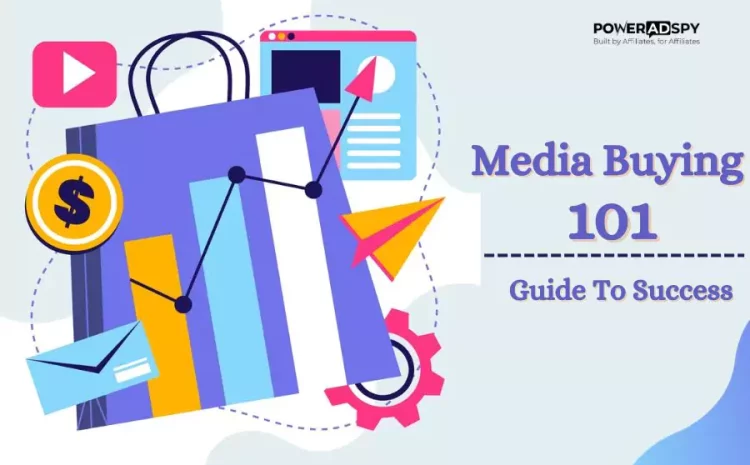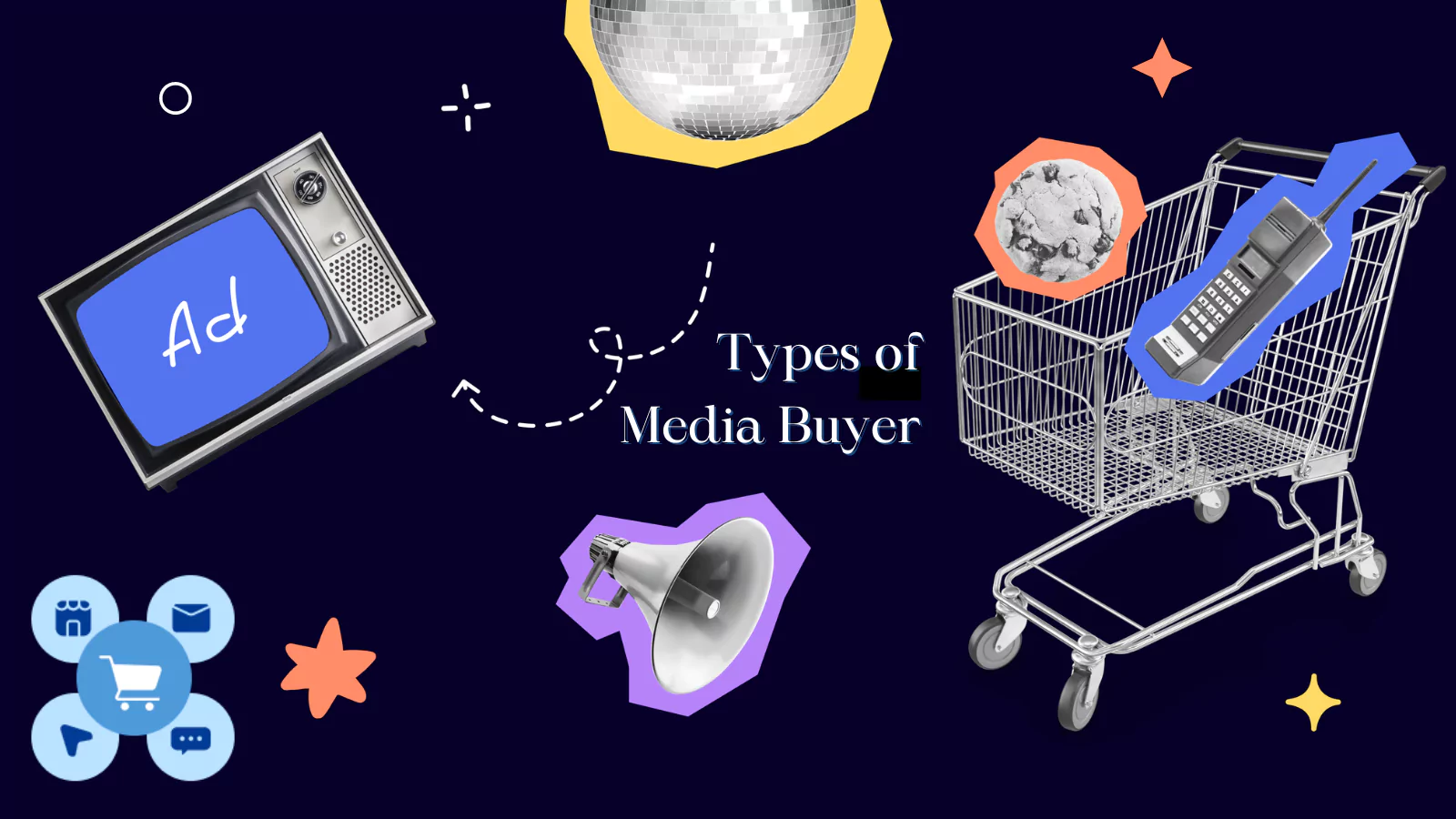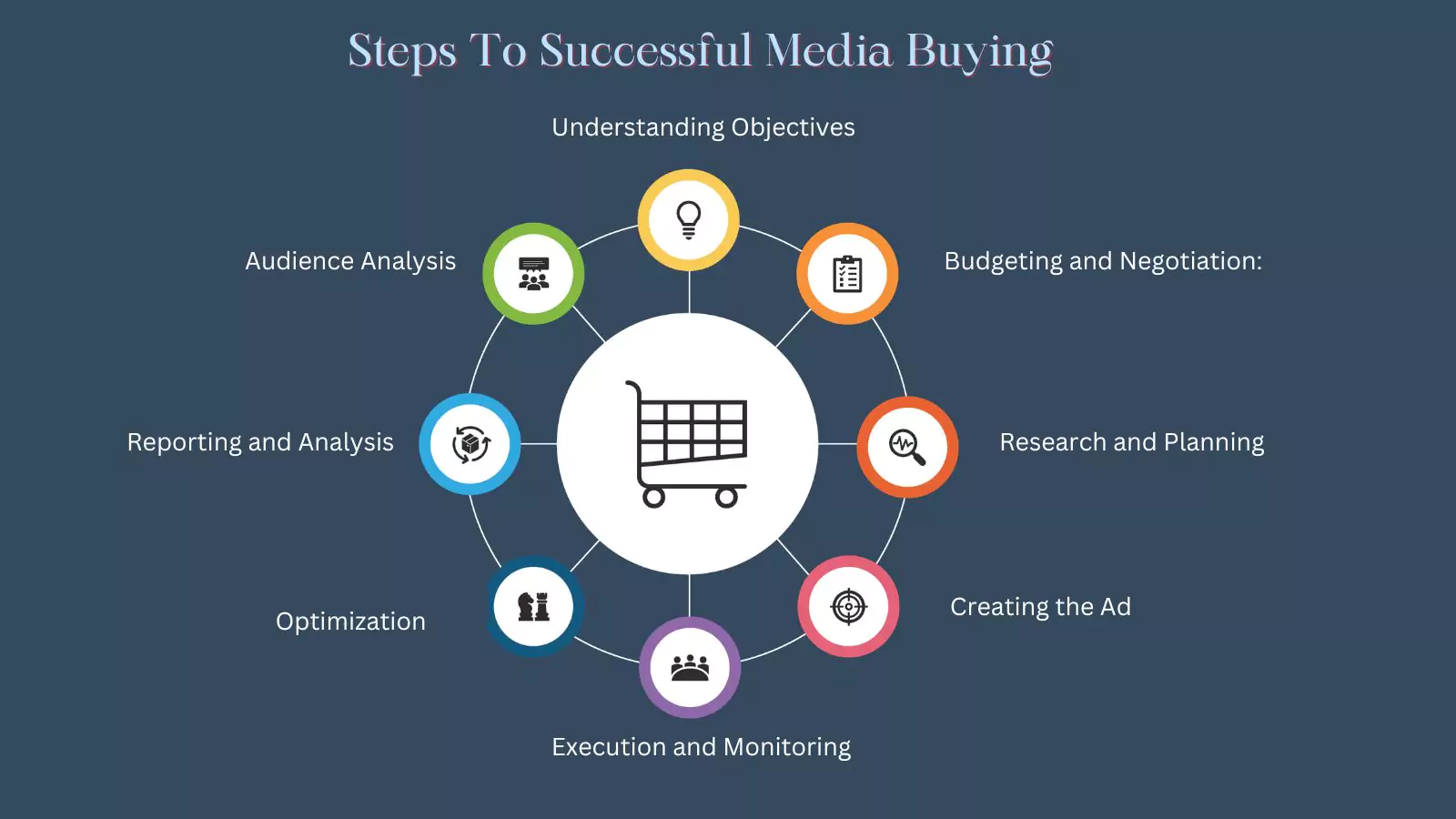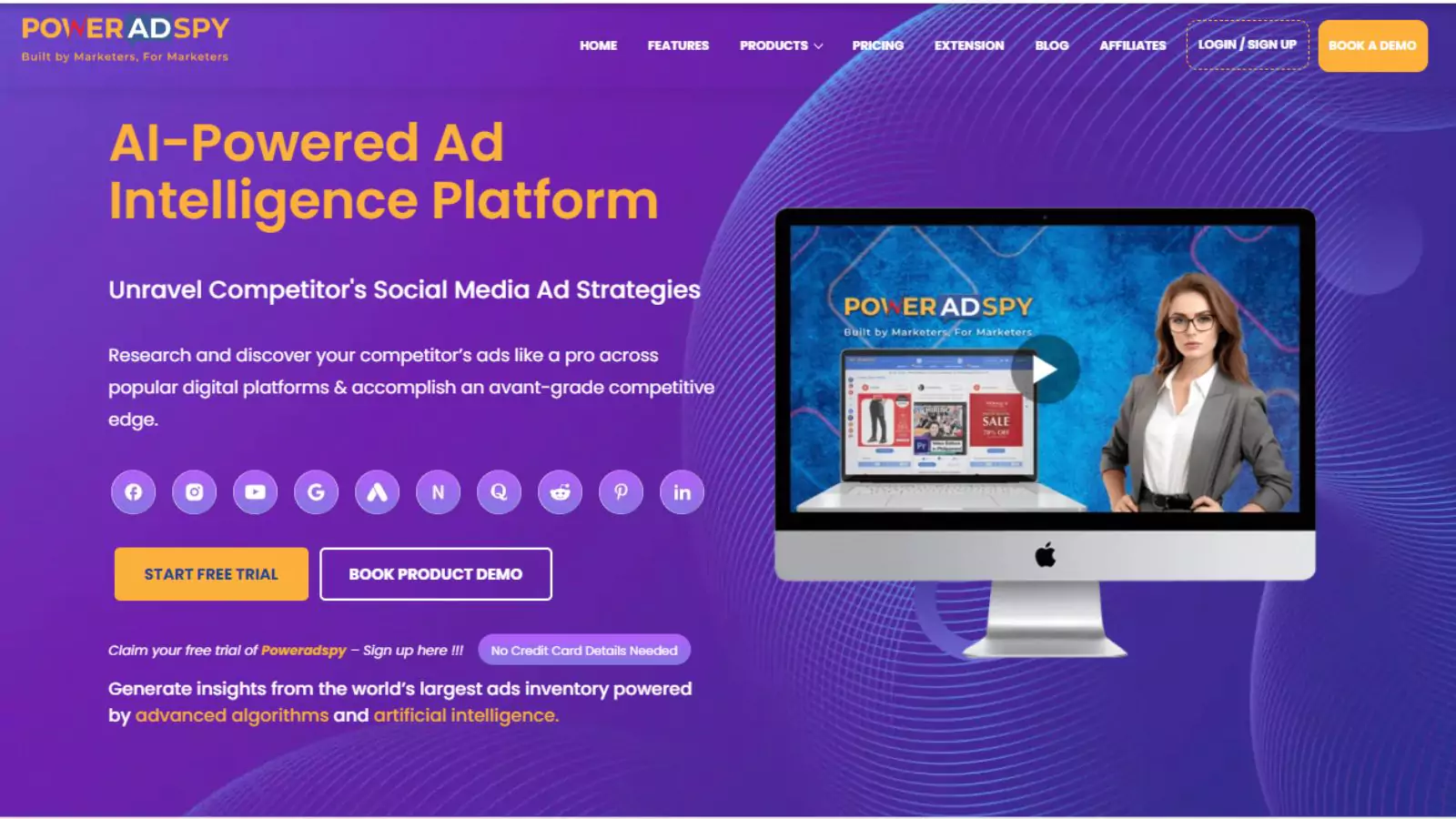Media Buying 101: Your Step-By-Step Guide To Success
Media buying 101 is your starting point for navigating the ever-evolving world of modern advertising in 2025. As digital platforms expand and attention spans shrink, knowing how to strategically place your message has never been more crucial.
Whether you’re new to marketing or looking to sharpen your skills, this guide simplifies the process of reaching your audience—right place, right time, right format.
Media buying involves more than simply acquiring advertisements; it entails strategically placing your message where it counts the most. Throughout this process, we’ll delve into various platforms like TV, the internet, and social media, understanding their mechanics while also harnessing the unique advantages that social media offers for effective communication and engagement.
Come along as we break down the basics of media buying 101, show you how to do it step by step, and share helpful tips. By the end, you’ll know how to make great ads that people pay attention to.
Hit ‘Play’ Button & Tune Into The Blog!
What Is Media Buying?
In simple terms, media buying 101 is about choosing the best places and times to show your ads—whether it’s on social media, websites, podcasts, or streaming platforms. It’s more than just buying space; it’s about making sure your message lands in front of the right people, at the right moment. Media buying is like choosing where to place your message in the big, wide world of- advertising. It’s about purchasing advertising space or time on various platforms like TV, radio, websites, social media, or print publications.
Imagine you have something to tell people, like a cool new product or an important message. Digital Media buying helps decide where and when to share that message to reach the right audience. It’s not just about buying space; it’s about strategically choosing the best places to put your message so that the right people see or hear it.
Media buyers research different options, negotiate prices, and plan how and when ads will appear. They focus on understanding- the audience of each platform to make sure the message gets to the people who are most likely to be interested. This way, they make the most of the budget and get the message out effectively.
Types Of Media Buying In 2025
Understanding the varied landscapes of Media Buying 101 involves recognizing its diverse types, covering both online and offline realms. In the digital sphere, media buying platforms like websites, social media, and video sponsorships offer ample advertising opportunities.
Meanwhile, more traditional methods such as radio, television, and live events continue to play a significant role in advertising strategies. In 2025, media buying has evolved to cover everything from traditional TV spots to programmatic ads and connected TV (CTV). Programmatic buying, in particular, automates ad placements using AI and real-time data, making it a game-changer for brands aiming to scale quickly.
Online Media Buying
Online advertising encompasses an array of mediums. You’ve probably come across In-Page Push ads on websites, shopping ads on social media, or video promotions on YouTube.
Search engines like Google or Bing also feature ads based on your search queries, providing marketers and brands opportunities to connect with their target audience. Additionally, leveraging mobile ads can attract new customers effectively. It enables precise ad targeting by country, language, device type, and more, offering a budget-friendly approach to media buying.
Television
Television advertising is a familiar experience for many, interrupted by commercials during favorite shows. These ads represent the media buying process for television. While TV remains a popular advertising platform, its growth rate is gradual, with a projected global market size of $174 billion by 2025, compared to $171 billion in 2024 (Statista).
Radio
Radio, including traditional and online channels, reaches over 3 billion listeners worldwide. Advertisements commonly punctuate radio programming, whether through traditional- broadcasts or modern podcasts, showcasing the radio ad-buying process.
Live Events
At live events like concerts, large LED screens often display ads between performances. Brands invest significantly in these slots to reach sizable audiences. Billboards, flyers, and even tour buses serve as advertising spaces, demonstrating the omnipresence of advertisements at live gatherings.
Media Buying unfolds across diverse platforms and channels, leveraging varied methods to reach audiences wherever they gather.
Steps To Successful Media Buying
Media buying involves several key steps to ensure that advertisements reach the intended audience effectively:
Understanding Objectives:
First, there’s a clear understanding of what needs to be achieved- with the advertising campaign. Goals might include increasing brand awareness, driving sales, or promoting a new product.
Audience Analysis:
Knowing the target audience is crucial. Media buyers study demographics, interests, behaviors, and other characteristics to identify the best platforms and times to reach these potential customers. Utilizing tools like PowerAdSpy can enhance this process, providing insights into audience preferences and behaviors across various platforms.
Research and Planning:
Media buyers research various media channels (TV, radio, digital, social, print) to determine which ones align best with the target audience and campaign goals. They consider factors like reach, cost, and the channel’s ability to engage the audience.
Budgeting And Negotiation:
Once the right platforms are identified- negotiations happen. Media buyers work to secure the best advertising spaces or time slots within the budget allocated. They negotiate prices, ad placements, and timing to maximize the impact within the set financial constraints.
Creating The Ad:
Media buyers collaborate with creative teams to develop compelling advertisements that resonate with the audience on each chosen platform. It might involve adapting ads for different formats (e.g., video, image, text) based on the platform’s requirements.
Execution And Monitoring:
In 2025, real-time analytics are essential. Media buyers rely on AI-powered tools like PowerAdSpy to monitor ad engagement, track audience behaviors, and instantly tweak campaigns for better ROI. Once the ads are live, media buyers continuously monitor their performance. They track metrics like reach, impressions, clicks, conversions, and engagement to assess how well the campaign is doing. Tools like PowerAdSpy- are often utilized in this phase, offering insights into ad performance, competitor strategies, and audience engagement. These tools help media buyers gather additional data and fine-tune strategies to optimize the campaign’s effectiveness.
Optimization:
Media buyers adjust to optimize the campaign’s performance based on the data gathered. This could involve tweaking the ad content, adjusting the placement strategy, or reallocating the budget to more successful channels.
Reporting And Analysis:
At the end of the campaign, media buyers analyze the overall performance. They create reports that highlight key insights and learnings, which can be used to improve future campaigns.
Throughout this process, Media Buying relies on a variety of resources, including data, market trends, their understanding of consumer behavior, and tools like PowerAdSpy. These tools provide valuable insights that help them make informed decisions and ensure the best possible outcomes for advertising efforts.
How PowerAdSpy Can Help You?
PowerAdSpy is a comprehensive display ads spy tool that provides insights into competitor advertising strategies. With a vast database- it unveils ad creatives across 10+ social media platforms.
It enhances Media Buying by providing valuable market insights, aiding in competitor analysis, and facilitating trend tracking across diverse advertising platforms.
Here are some key features of PowerAdSpy:
- Competitor Analysis: PowerAdSpy helps analyze competitors’ ad strategies across diverse platforms, aiding in understanding their approaches and creative styles.
- Ad Performance Insights: Gain insights into ad performance metrics such as engagement, impressions, and demographics, assisting in identifying successful ad campaigns.
- Targeting Details: Explore detailed targeting information, including audience segments and demographics, to refine audience targeting strategies.
- Trend Identification: Track emerging trends and patterns in ad creatives, enabling marketers to adapt and align their strategies with current market trends.
- Creative Inspiration: Access a vast database of ad creatives for inspiration, aiding in creating compelling ad campaigns.
By utilizing PowerAdSpy within Media Buying, learners and practitioners can leverage its features to conduct competitive analysis, optimize targeting strategies, and stay updated with current advertising trends, ultimately improving their media buying expertise.
Also Read,
How Top Brands Are Leveraging Mobile Ads To Attract High-Quality Customers? How Can You Do It?
Everything About Social Media’s Importance For B2B Companies
What Should Media Buyers Do To Thrive In 2025?
Here are five key strategies for media buyers to succeed in 2025:
Embrace Data-Driven Decisions: Utilize advanced analytics and data-driven insights to inform media buying 101 strategies. Emphasize real-time data analysis to adapt campaigns swiftly, leveraging AI-driven tools for precise targeting and optimization.
Adapt To Evolving Platforms: Stay ahead by understanding and integrating emerging platforms and technologies. Explore innovative ad formats, like augmented reality (AR) or interactive content, to engage audiences in novel ways.
Prioritize Personalization: Focus on hyper-personalization by tailoring ads to individual preferences. Utilize customer data to deliver highly targeted and relevant content, enhancing user experience and driving better conversion rates.
Optimize For Omnichannel Experiences: Integrate campaigns seamlessly across multiple channels for a cohesive brand experience. Employ strategies that align messaging and visuals across platforms, ensuring a consistent brand presence.
Sustainability And Social Responsibility: Reflect and promote values that resonate with socially conscious audiences. Embrace sustainability and responsible messaging, aligning campaigns with causes that reflect societal concerns and values.
By incorporating these strategies into their approach, media buyers can adapt to the evolving landscape, harness the power of data, and create impactful, personalized campaigns that resonate with audiences in 2025.
Wrapping Up
Media buying 101 in 2025 is all about smart strategy—placing the right ad, on the right platform, at just the right moment. Whether you’re running TV spots, streaming ads, or social media campaigns, knowing how to buy media effectively helps your message cut through the noise.
With tools like PowerAdSpy in your corner, you’re not just guessing—you’re making data-driven decisions that convert. Use this updated knowledge to make your media buying strategy sharper, smarter, and future-ready.










